Flatwater Grades
Unlike the International River Grading System there is no universally accepted grading system for the sea, estuaries and large areas of open water. This grading system has been developed by PaddleNSW qualified Sea Instructors to assist in describing all waterways in the Guide.
Sea and open water conditions vary according to many factors, these may include:
• wind strength
• duration the wind has been blowing
• fetch (the distance over which the wind has blown)
• depth of water
• bottom type and shape
• presence and type of shore lines
• currents
• air and water temperature
• tide
The Sea/Open Water Grading System is an indication of the expected difficulty for a designated journey rather than a specific area or site. It is based on the paddling trip being carried out in up to “moderate” wind conditions (i.e. Beaufort Scale Force 4, 20-28 Km/ h, 11-16 Knots). It is the overall grade for the trip also taking into account factors such as expected water conditions, swell, type of entry and exits distance between suitable landing spots and from land or forms of support and rescue, type of coast and other hazards (rocks, reefs, vessels etc).
It should always be remembered that a significant change in the intensity or direction of the wind or swell could turn a comfortable paddling trip on the sea or open water into a challenging and potentially dangerous situation in a matter of minutes. Be prepared with the appropriate equipment, skills and knowledge including an awareness of the current weather forecast.

Sheltered flat water with minimal currents, easy entry and exits and no more than 500m from safe landing sites.
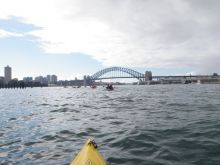
Unsheltered inland open waters, estuaries and lakes, or sheltered coastline. Small waves or surf less than 0.5m, currents less than 2km/h, crossings no more than 1km from safe landing sites.
Sheltered coastal waters with possible wind against wave or tide effects and moderate breaking seas. Possible surf entry and exits less than 1m, currents less than 4km/h, up to 5km crossings or from safe landing sites.
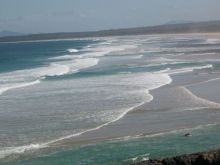
Unsheltered coastal waters which may encounter steepening swell and breaking seas, wind against wave or tide effects. Entry and exits may be difficult and involve negotiation of surf up to 2m. May involve fast currents up to 7km/h and up to 10km crossings or from safe landing sites

Unsheltered coastal waters, isolated remote areas and ocean with crossings or distance from safe landing sites of up to 30km. May encounter large, steep swell, breaking waves and complex fast currents. Possible dangerous surf entries and exits with waves more than 2m.
Whitewater Grades
International River Grading System. There are six levels each referred to as "Grade" or "Class" followed by a number. The scale is not linear, nor is it fixed. For instance, there can be hard grade twos, easy grade threes, and so on. The grade of a river may change with the level of flow.
Grade 1 Easy
River grading in Australia and New Zealand is taken from the International River Grading System:
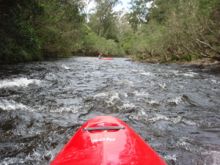
Moving water with a few riffles or small regular waves. Easy passage, but care may be needed with obstacles.
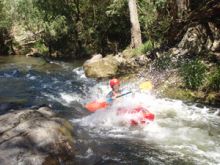
Rapids have many medium sized waves (less than 1m), low ledges or drops, easy eddies and gradual bends. The passage is easy to recognise and is generally unobstructed.

Rapids have fairly high waves (1-2m tall), broken water, strong currents and eddies, large holes, exposed rocks and small falls. The passage may be difficult to recognise from on the river and manoeuvring around obstacles is required to negotiate the rapid.
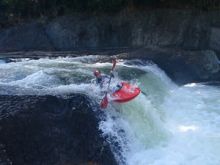
Difficult rapids that have high, powerful, irregular waves, broken water, often boiling or strongly recirculating eddies, strong powerful hydraulics, ledges, drops and dangerous exposed rocks. The passage often difficult to recognize and precise sequential maneuvering is required. A definite risk of injury or long swims exists.
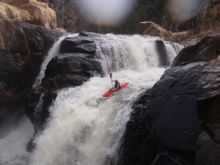
Very powerful rapids, with very confused and broken water, massive waves, large drops, violent and fast currents, abrupt turns, difficult powerful stopper hydraulics. Many dangerous exposed rocks and fastly boiling terminal eddies. There are numerous obstacles in the main current, including dangerous, possibly life-threatening hazards. The extreme for commercial operations. Complex, precise and powerful sequential maneuvering is required for safe passage. A definite risk to personal health and safety exists.
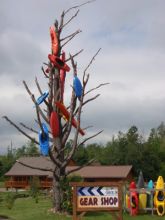
Extremely dangerous, classified as unraftable. All previous difficulties increased to the limit of practicability. Very confused, very violent, exploding and folding water so difficult that controlled navigation by raft is virtually impossible. Swimming this grade of rapid is considered suicidal. Requires extreme luck or skill to finish.
Boats including Kayaks and Canoes are not allowed on this waterway or water body.
No information available
Easy Canyon
Canyon Medium
Canyon Hard
Other Grades
Access to this waterway is restricted. eg up the Parramatta River or Cockle Bay or Sydney Cove in the Special areas of a potable water catchment
No information available

